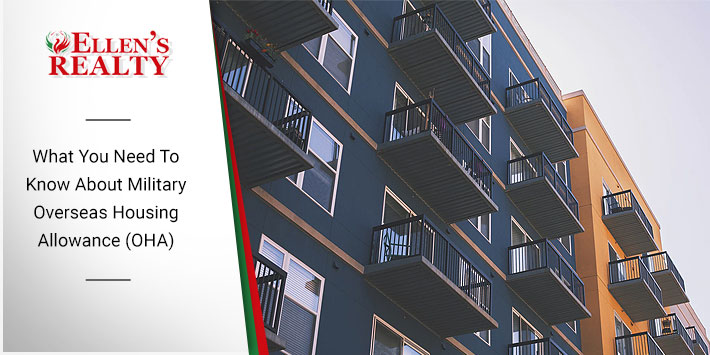Guam’s location and its topography is of strategic significance to naval nations in the Pacific Ocean. It is the only island with a protected harbor as well as adequate land for airports. Guam is also the largest depot for communications, shipping and military installations. This means that Guam has access by air and sea to China, Hawaii and North America as well as in Southeast Asia.
The United States has maintained a military presence in Guam since 1898, and is currently running 2 major bases on the island. With Naval Base Guam in the southern side and Anderson Air Force Base in the northern part, there are an estimated 7,000 U.S. troops deployed and living in Guam.

Active duty members who are stationed overseas and are approved to live off-base at government expense receive an Overseas Housing Allowance (OHA). If you’re military and have been recently relocated to Guam, here is everything you need to know about OHA and buying property on the island.
What is OHA?
Overseas Housing Allowance is a program designed to partially offset housing expenses at overseas duty locations where Service members live in privately leased housing. This is a reimbursement system that takes into consideration the amount Service members paid on rent, utilities and related move-in costs.
How do you know how much of your rent is covered by OHA?
Depending on location, military members are assigned a rental cap. This is based on the average rental costs in the area, member’s rank and whether or not the member is living with dependents. On top of the monthly rental reimbursement that’s limited to the cap, OHA payment also includes an allowance for utilities. This amount is based on random inquiries of military members in the area. Everyone is granted the same allowance for utilities regardless of pay grade or rank.
The Department of Defense has an OHA calculator is available in their website to help determine one’s Overseas Housing Allowance for their specific location.

What are related move-in costs?
Move-In Housing Allowance (MIHA) is an allowance paid to help offset the costs associated with initial occupancy such as:
- MIHA Miscellaneous – This is paid in lump-sum and no receipts are required. Necessities such as sinks, toilets, light fixtures, refrigerator, stove and kitchen cabinets.
- MIHA Rent – This applies to all rent related expenses like advanced security deposits required by the landlord, real estate agency fees, redecoration fees and lease taxes. All receipts must be submitted to avail of the allowance.
- MIHA Security – These expenses are for members assigned to areas where housing must be modified to minimize exposure to any criminal or terrorist threat. Only items used to modify the physical dwelling are permitted. Receipts are required and must be approved by the senior officer.
How do the fluctuations in exchange rates affect OHA?
If the rental allowance for your duty station is set in local currency, the Department’s Per Diem, Travel and Transportation Allowance Committee can adjust the OHA every month to maintain your purchasing ability. The same committee closely monitors any changes in exchange rate. Expect that these changes will take a while to reflect on your paycheck, just as it requires time to process an allotment change.
How is OHA allocated for married couples who are both in the military?
For military couples who jointly occupies leased housing overseas, they are treated as separate entities for purposes of OHA. Each of them are eligible to claim OHA up to the amount of their OHA rental cap, but the total payments between the couple cannot exceed the actual amount of rental expenses being paid on their property. This holds true whether or not they have dependents. However, if they do have dependents, one of the service members (the more senior ranking) is eligible to receive OHA at the rate of those with dependents. The maximum eligible amount of OHA for the other member is at the “without dependents” rate.
How frequently is OHA reviewed?
Overseas Housing Allowance is usually reviewed once every 6 months.
How do I avail of OHA?
As soon as you arrive at your duty station, check immediately with the local housing office or the local commander to determine what the procedures are for your area.
Make sure to work with a licensed professional to help you find the rental that best suits you. Find one that is very familiar with the ins and outs and all the requirements of working with military housing offices.
Once you’ve found housing, bring a copy of your lease to the proper official for approval and complete the Individual Overseas Housing Allowance Report (DD Form 2367). If you qualify for MIHA Rent or MIHA Security, a Move-In Housing Allowance Claim (DD Form 2556) must be completed. Each time your housing information changes, a new DD Form 2367 must be completed.

